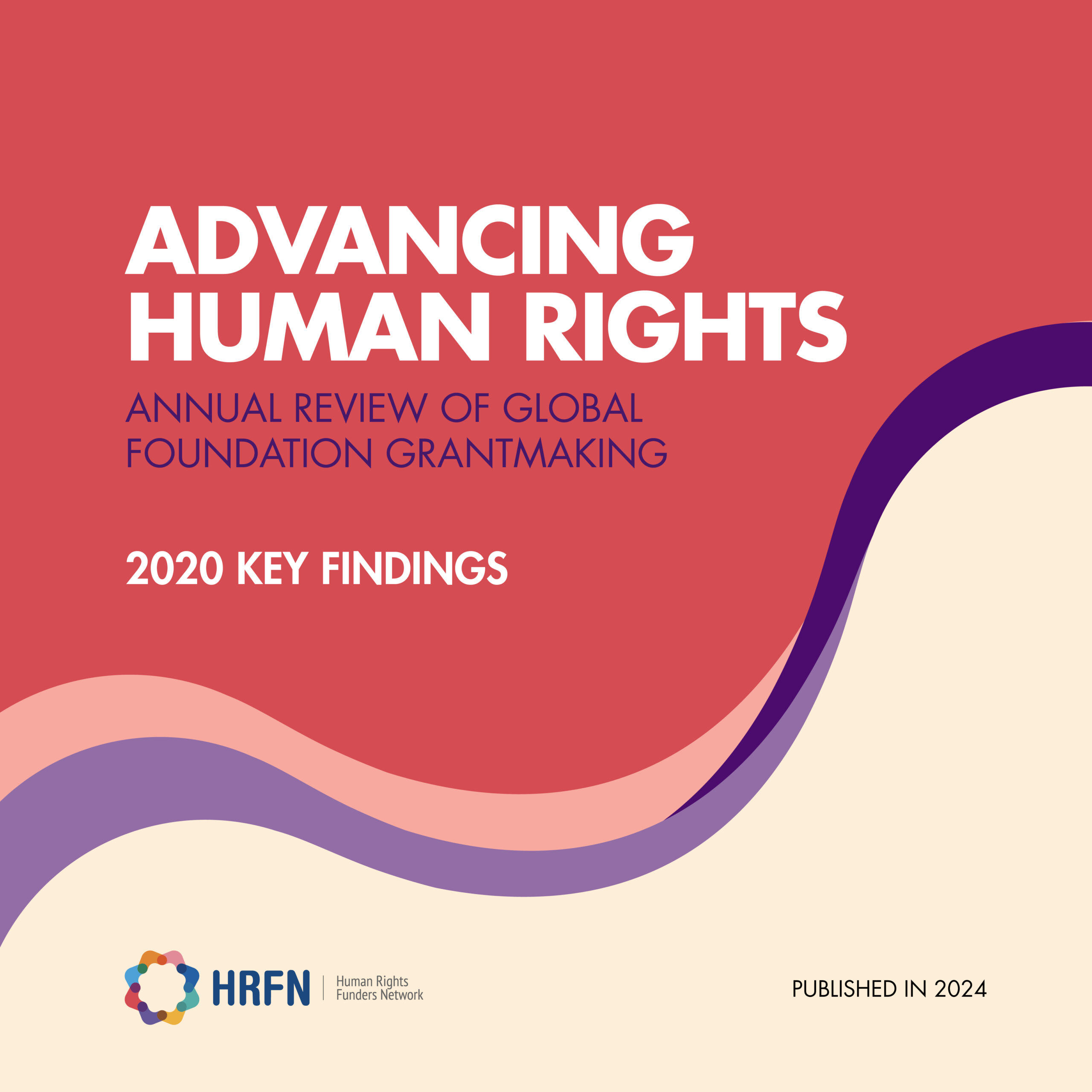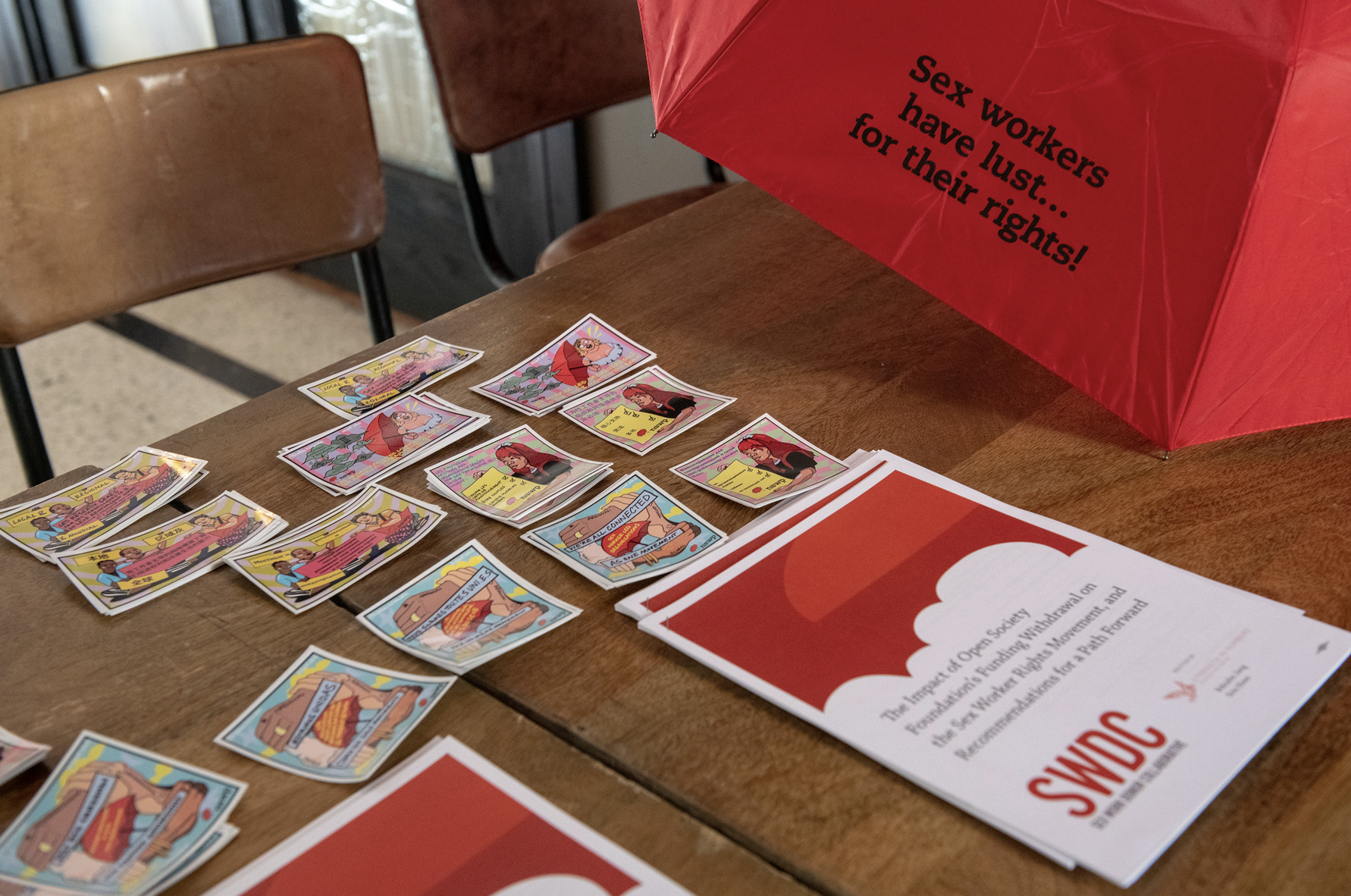The Stories We Can and Can’t Tell: Five Years of Mapping Human Rights Funding
By Anna Koob (Knowledge Services Manager), Foundation Center and Rachel Thomas (Director of Research Initiatives), Human Rights Funders Network

Anna Koob
Advancing Human Rights, a partnership between Human Rights Funders Network and Foundation Center, in collaboration with Ariadne and Prospera, is one of the most ambitious quantitative research projects to date focused on human rights philanthropy. The five years of data featured on the research hub captures almost 100,000 human rights grants from 1,193 funders located in 114 countries.
This work is valuable because it allows funders and others to understand the funding landscape for human rights, identify trends in the field, address funding gaps, and find peer organizations working on similar issues. Yet, it’s not without its challenges.
Having recently released our first ever trends analysis, we have taken the opportunity to reflect critically about the way we’ve collected, analyzed, and presented the data since we began this work in 2010. It’s an opportunity to pose a question that implicates all of us: What can we do better?
What Are the Challenges?
We love data, but even we recognize this undertaking is inherently tough. Some of the challenges we face – particularly in data collection – are intrinsic to the field. Funders often differ in how they define their own human rights work, while shifting priorities and the introduction of new terms and trends make it hard to apply strict parameters to the data set from year to year. Meanwhile, we collect data from hundreds of funders who are operating in different policy contexts, reporting their data in various languages, employing different grants systems and approaches to data tracking, and operating with varying levels of commitment to data sharing and transparency. You get the idea; it’s not an easy lift.
Standardizing data across multiple institutions is a tricky business – just ask those working to assess progress on education, healthcare, or the Sustainable Development Goals. We know we can’t impose complete data conformity — nor would we want to. The diversity of the human rights field is one of its most exciting qualities. That said, we’ve identified a few areas where we think we, collectively, can do better.
Where Can We Improve?
- Provide Nuanced Grant Descriptions.
We can’t track what funders don’t report. To this end, we encourage data submitters to include nuanced information in their grant descriptions, going beyond the basic “who, what, where” to respond to the question: “What’s most interesting about this grant?”
For example, a grant awarded to Freedom to Marry used the following grant description: for “public education and communications strategies to advance marriage equality.” This provides us with sufficient information to identify the issue, strategy, and beneficiary population of the grant within our human rights taxonomy (right to equality, public education, and LGBTQI, respectively). But what additional interesting information might be missing? Is there a specific subset of the LGBTQI community that was actually the main target population? Were they hoping for a secondary outcome like movement building that isn’t mentioned here? In addition to enabling us to classify the grant more accurately, these details help us identify categories we may be missing in our taxonomy. In 2014, for example, we added “human rights defenders” because this was a population funders were frequently referencing in their grant descriptions.
- Identify Who’s Getting the Money.
We want to know more about who’s actually receiving these grant dollars. We’ve heard a mounting chorus of funders calling for foundations to fund local projects that are community-led. Do the numbers reflect this growing commitment? The picture is not entirely clear.
Our research tracks the locations of grant recipients and areas served. With this information we can see whether a grant recipient is located in Sub-Saharan Africa for work to benefit Sub-Saharan Africa, or if the funding is going to an international NGO based in the Global North to do the work. In some instances, funders intentionally omit geographic details about certain grants based on security concerns which we encourage for sensitive contexts. However, sometimes funders leave this information out of their grants data across the board, or use broad labels like “global” or “Africa” when narrower designations might be possible. The more specific information funders can provide about geography (e.g. countries, cities) the closer we get to understanding how much funding is reaching local and national organizations.
- Include Details about Grant Type and Duration.
We want to know to what extent our community is delivering on the flexible long-term support that is so valuable to grantee organizations. In the infographic we produced for our recent trends analysis, we indicated that 25 percent of overall human rights grant funding was awarded as general (also called “unrestricted” or “core”) support. In truth, the actual figure may be higher since we only include grants in this category if funders specifically indicate that they belong there. We don’t mind which term you use, but if you are providing general, unrestricted, core funding please include a column in your data submission to flag it.
We also ask funders to report grant duration, but only two-thirds of the grants included in our 2011-2015 trends analysis included this detail. There is a simple fix for this: include grant dates when you report your data.
- Be Timely.
Finally, we want to reduce the time lag in our research. Though we update our funders-only map weekly with grant-level data, our annual analyses take longer. In December 2017, we released our 2015 data set.
As we work to improve and streamline our data collection and analysis, we need your help. We can’t close a data set without receiving data from a critical mass of human rights funders. For funders based in the U.S., we can gather some grant details from 990 tax forms. However, it can take up to two years for that information to be made public, and then we have a mountain of data to analyze all at once. We also get much richer data when funders send us their grants information directly since they can include more detail than the IRS collects and thus code and categorize grants more accurately.
We would love for more funders to submit their grants data to us directly – and do it more often. This may make the process easier for funders, too, since they won’t need to review as much data at once. Quarterly submissions are ideal, but we encourage funders who can’t report more than once a year to send us their grants data within six months of when their fiscal year ends.
Moving Forward
As we mark a close to this blog series, we thank those who have followed along. This summer, HRFN will conduct an extensive evaluation of the research so far – identifying what’s been most useful, determining where we can improve, and envisioning a future for the research in the coming years. Stay tuned: there is a survey coming your way.
In the meantime, the next time you receive a message from Foundation Center, HRFN, Ariadne, or Prospera reminding you to submit your grants data, please keep the above points in mind. Even if you aren’t responsible for submitting data for your organization, perhaps you can strike up a discussion at the water cooler with your colleagues who are. Conversation starters might include “Won’t it be fascinating to see our own ratio of general support grants?” or “Wouldn’t it be neat if we could see all of our grants for a full year reflected on Foundation Maps earlier to help us tell the story of our grantmaking?” Feel free to reach out to HRFN’s Camille Serrano at cserrano@hrfn.org as questions come up in preparing your grants submissions. We are – after all – in this together.




